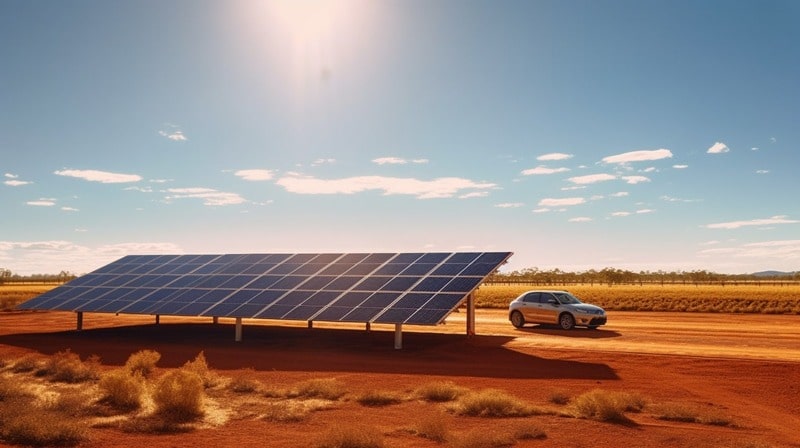Australia, with its vast landscapes and unique ecosystems, has always been at the forefront of environmental conservation. As the world grapples with the challenges of climate change, the focus on sustainable solutions has never been more critical. One such solution that has garnered significant attention in recent years is carbon capture and storage (CCS). This article delves deep into what carbon capture is, its significance in Australia, and how it can play a pivotal role in combating climate change.
The Australian landscape, rich in biodiversity, has always been sensitive to environmental changes. As such, the nation has a responsibility to lead in sustainable practices. With the global emphasis on reducing carbon emissions, Australia’s exploration and investment in CCS technology showcase its commitment to a greener future.
Understanding Carbon Capture and Storage (CCS)
Carbon capture and storage, often abbreviated as CCS, is a technology designed to capture carbon dioxide (CO2) emissions at their source, such as power plants and industrial facilities. Once captured, the CO2 is transported and stored underground, preventing it from entering the atmosphere. This process is crucial as CO2 is a primary greenhouse gas responsible for global warming.
In Australia, several projects are underway that utilise CCS technology. For instance, the Gorgon gas field, operated by Chevron Corp., stands as the world’s largest commercial CCS project. The Australian government, recognising the potential of CCS, has initiated public consultations on new greenhouse gas storage acreages, further emphasising its commitment to this technology. Moreover, with Australia’s rich geological formations, the country offers ideal conditions for the safe and long-term storage of captured CO2.
Why is CCS Important for Australia?
Australia, being one of the largest Liquid Natural Gas (LNG) exporters globally, has a vested interest in ensuring that its industries are sustainable. CCS offers a viable solution to decarbonise these industries, allowing Australia to continue its LNG production while minimising its carbon footprint. Countries like Japan and South Korea, top buyers of Australian LNG, are also keen on sourcing their energy from environmentally responsible sources, making CCS even more critical for Australia’s export market.
Furthermore, the Australian government has set ambitious targets to cut carbon emissions by 43% by 2030 and achieve net-zero emissions by 2050. CCS plays an integral role in achieving these targets, offering a solution that not only reduces emissions but also promotes sustainable industrial growth. The government’s proactive approach, combined with industry collaboration, is setting Australia on a path to become a global leader in CCS technology and implementation.
Consumer’s Role in Reducing Carbon Emissions
While large-scale solutions like CCS are vital, individual actions play an equally crucial role in combating climate change. Here are some steps Australians can take to reduce their carbon footprint:
- Driving Electric Vehicles (EVs): Switching to EVs can significantly reduce carbon emissions. With Australia’s growing infrastructure for EV charging stations, making the switch has never been easier. Additionally, the Australian government offers incentives for EV buyers, further promoting the adoption of cleaner transportation.
- Reducing Meat Consumption: The meat industry is a significant contributor to greenhouse gas emissions. By reducing meat consumption or opting for sustainable meat sources, individuals can make a considerable difference. Adopting a plant-based diet even a few days a week can have a notable impact on one’s carbon footprint.
- Installing Solar Panels: Harnessing solar energy for household use reduces reliance on fossil fuels. With Australia’s abundant sunshine, solar panels can provide a significant portion of a household’s energy needs. Moreover, solar energy is becoming increasingly affordable, making it an attractive option for many homeowners.
- Switching to Renewable/Green Energy Plans: Many energy providers offer green energy plans sourced from wind, solar, and hydroelectric power. Opting for these plans not only reduces one’s carbon footprint but also supports the renewable energy sector in Australia.
- Upgrading to LED Lights: LED lights consume less energy and last longer than traditional bulbs, leading to both cost savings and reduced energy consumption. As technology advances, LED lighting solutions are becoming more efficient and versatile, suitable for various applications in homes and businesses.
- Proper Recycling: Ensuring that waste is correctly sorted and recycled can reduce the amount of garbage sent to landfills, which produce methane, a potent greenhouse gas. Recycling also conserves resources and energy, further emphasising its importance in a sustainable lifestyle.
The Way Forward
Carbon capture in Australia is not just about technology; it’s about a vision for a sustainable future. As the world moves towards more sustainable energy sources, Australia’s investment in CCS and its push for individual actions to reduce carbon footprints showcase its commitment to a greener future.
With the support of both the government and the public, Australia can lead the way in innovative solutions to combat climate change, ensuring a safe and sustainable environment for future generations. As research continues and technology evolves, Australia’s role in the global CCS landscape will undoubtedly grow, setting a precedent for other nations to follow.
Frequently Asked Questions (FAQs)
- What is carbon capture and storage (CCS)? CCS is a technology designed to capture carbon dioxide emissions at their source and store them underground, preventing them from entering the atmosphere.
- Why is CCS important for Australia? As one of the largest LNG exporters, Australia aims to decarbonise its industries. CCS allows for continued LNG production while minimising carbon emissions.
- How can individuals reduce their carbon footprint? Individuals can drive EVs, reduce meat consumption, install solar panels, switch to renewable energy plans, upgrade to LED lights, and recycle properly.
- Is the Australian government supporting CCS? Yes, the Australian government has initiated public consultations on new greenhouse gas storage acreages and supports various CCS projects.
- What are Australia’s carbon emission targets? Australia aims to cut carbon emissions by 43% by 2030 and achieve net-zero emissions by 2050.


Leave a Reply